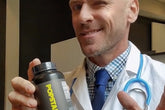The penis shaft is a central component of male genital anatomy, playing key roles in sexual function, urinary health, and overall men’s wellbeing. Understanding penis shaft anatomy, common problems, and healthy care practices helps men feel more informed, confident, and proactive about their sexual health.
Table of Contents
- Definition and Overview
- Key Takeaways
- Quick Facts About the Penis Shaft
- Penis Shaft Anatomy
- Penis Shaft Function
- Common Penis Shaft Problems
- Penis Shaft Pain
- Penis Shaft Hygiene and Care
- Penis Shaft Health and Medical Conditions
- Psychological and Relationship Factors
- Risks and How to Reduce Them
- When to Seek Medical Help
- Frequently Asked Questions
- References and Further Reading
- Disclaimer
Definition and Overview
The penis shaft refers to the cylindrical portion of the penis extending from the base to the glans (the head). It contains erectile tissue, blood vessels, nerves, and connective tissue that support sexual function, erections, and urinary passage. The term penile shaft is commonly used in medical settings.
Key Takeaways
- The penis shaft is the primary structural portion of the penis between the base and the head.
- It houses erectile tissue essential for achieving and maintaining erections.
- Penis shaft pain can be caused by injury, infections, skin irritation, or underlying health conditions.
- Proper penis shaft hygiene helps prevent irritation and infections.
- Emotional factors like anxiety can affect penis shaft function and erections.
- Skin symptoms such as redness, dryness, or swelling should be evaluated if persistent.
- Safe sexual practices reduce risks of trauma or sexually transmitted infections.
- A healthy penis shaft contributes to sexual comfort, confidence, and overall men's wellbeing.
Quick Facts About the Penis Shaft
| Category | Key Information |
|---|---|
| Definition | The cylindrical part of the penis between base and glans |
| Main Tissues | Erectile tissue, nerves, skin, connective tissue |
| Key Functions | Erections, sexual stimulation, urinary passage |
| Common Issues | Pain, irritation, curvature, dryness, injuries |
| Care Tips | Gentle washing, lubrication, safe sex practices |
Penis Shaft Anatomy
The penis shaft is composed of three main erectile structures: two corpora cavernosa and one corpus spongiosum. Surrounding these structures is a layer of connective tissue, skin, blood vessels, and nerves.
Corpora Cavernosa
These two chambers run along the top of the shaft and fill with blood during arousal, causing the penis to become firm.
Corpus Spongiosum
This structure surrounds the urethra and helps protect the urinary passage during erection.
Skin and Nerve Supply
The skin on the penile shaft is thin and sensitive. Nerves support pleasurable sensation and contribute to sexual response.
Penis Shaft Function
The penis shaft supports essential sexual and urinary functions.
Sexual Function
- Supports erections
- Allows penetration during intercourse
- Provides pleasurable sensation
Urinary Function
The urethra runs through the shaft, enabling the passage of urine.
Common Penis Shaft Problems
Many men experience penis shaft issues at some point in their lives.
Common concerns include:
- Skin irritation or redness
- Penis shaft pain during erections
- Dry or cracked skin
- Lumps or bumps
- Curvature or bending
- Trauma-related pain
- Swelling or inflammation
Penis Shaft Pain
Penis shaft pain can stem from various sources.
Common causes include:
- Friction irritation
- Sports injuries
- Sexual overuse
- Peyronie's disease
- Infections or inflammation
If pain persists, worsens, or occurs suddenly, medical evaluation is important.
Penis Shaft Hygiene and Care
Good penis shaft care helps prevent discomfort and health problems.
Hygiene Tips
- Wash daily with mild soap and warm water.
- Gently clean skin folds.
- Keep the area dry to reduce irritation.
Care Practices
- Use lubrication during sexual activity.
- Avoid harsh soaps or fragrances.
- Wear breathable clothing.
Penis Shaft Health and Medical Conditions
Several conditions can affect penis shaft health.
Common Medical Factors
- Erectile dysfunction
- Peyronie's disease
- Skin infections
- Dermatitis
- Sexually transmitted infections
Psychological and Relationship Factors
Emotional factors can influence penis shaft function, especially erection quality.
Influencing factors include:
- Stress
- Anxiety
- Performance pressure
- Relationship conflict
Healthy communication and emotional wellness support penis shaft health.
Risks and How to Reduce Them
| Risk | Reduction Strategy |
|---|---|
| Skin irritation | Gentle washing, avoid harsh products |
| Sexual injury | Use lubrication, communicate with partner |
| Infection | Safe sex practices, routine hygiene |
| Pain from bending | Avoid sudden pressure on the shaft |
When to Seek Medical Help
Seek professional guidance if you experience:
- Persistent penis shaft pain
- Sudden bending or popping sensation
- Swelling or bruising
- Skin lesions that do not heal
- Severe curvature affecting sexual function
Frequently Asked Questions
What is the penis shaft?
The penis shaft is the long, cylindrical portion of the penis between the base and the head. It contains erectile tissue essential for sexual function.
Why does my penis shaft hurt?
Penis shaft pain may result from irritation, friction, inflammation, injury, or medical conditions. Persistent pain deserves medical attention.
Is penis shaft dryness normal?
Occasional dryness can occur from friction or harsh soaps. Regular moisturizing and gentle hygiene help prevent it.
Can penis shaft problems affect erections?
Yes. Pain, curvature, or emotional stress can influence erectile function.
What causes bumps on the penis shaft?
Bumps may come from ingrown hairs, cysts, irritation, or infections. New or persistent bumps should be checked by a professional.
How do I keep my penis shaft healthy?
Gentle washing, safe sex, lubrication, and avoiding excessive friction all support penis shaft health.
Is it normal for the penis shaft to curve?
A mild curve is common. Severe or painful curvature may indicate Peyronie’s disease.
How does anxiety affect penis shaft function?
Anxiety can interfere with arousal and erections, leading to difficulty achieving or maintaining firmness.
Should I be concerned about redness on the penis shaft?
Redness may be from irritation, dryness, or infection. If it does not resolve quickly, seek medical advice.
Can tight clothing cause penis shaft irritation?
Yes. Non-breathable fabrics may trap moisture and cause chafing.
What if my partner notices changes in my penis shaft?
Open communication and willingness to seek medical advice help maintain trust and sexual confidence.
Is penis shaft pain after sex normal?
Mild temporary soreness may occur, but persistent pain suggests injury or irritation.
Can infections affect the penis shaft?
Yes. Bacterial, fungal, and viral infections may cause redness, pain, or lesions.
How do I talk to a doctor about penis shaft problems?
Describe symptoms clearly, including pain, timing, skin changes, or erectile issues.
When should I avoid sexual activity due to penis shaft issues?
Avoid intercourse if you have pain, open sores, swelling, or discomfort.
References and Further Reading
- National health services resources on men's sexual health
- Urology association educational materials
- Sexual health nonprofits offering anatomy guides
- Peer-reviewed articles on penile anatomy and erectile function
- Psychology resources on sexual anxiety and performance stress
Disclaimer
This article is for informational and educational purposes only and does not constitute medical or mental health advice. It is not a substitute for speaking with a qualified healthcare provider or licensed therapist.




















































